New Roof for the UNI-Dome, 1998

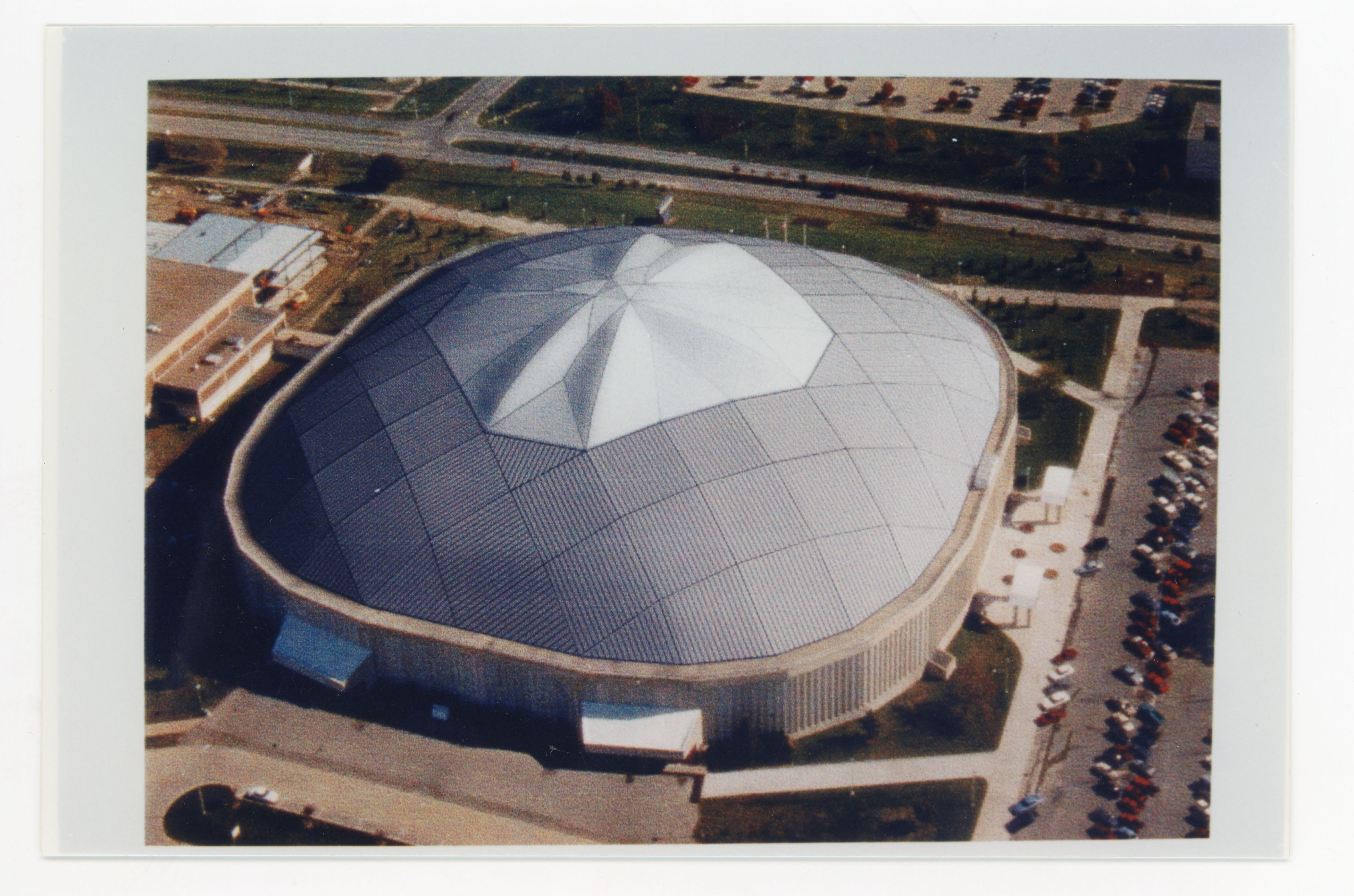
When the UNI-Dome was constructed, the roof was made of fabric and supported by air pressure. A roof of this kind on such a large building was a relatively new and not widely tested construction technique. A rigid roof would likely have been better. However, the air-supported fabric roof was considerably less expensive. That was an important factor during the fund-raising campaign for the Dome. Sources of donation were being exhausted and interest rates were very high. The project needed to move forward. A less expensive roof helped to make construction possible at that date.
The fabric roof worked fairly well for many years. There were several early failures likely due to a lack of understanding on how to control the air pressure system and how to accommodate unusual and severe weather. Shortly after its inflation in October 1975, for example, high winds and heavy rains combined to make a mess of things.
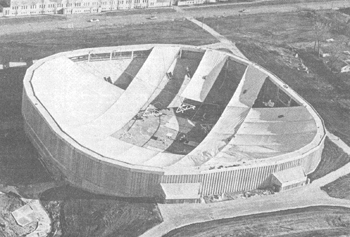
There was another deflation in June 1977, but, after repairs, the fabric roof stayed in place until December 1994 when heavy snow caused a deflation and a large rip in the fabric.
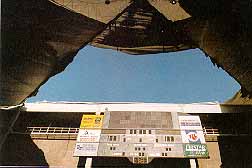
Repairs were made, but it was clearly time to do something substantial with the UNI-Dome roof. Maintenance costs were high, the fabric was aging, and newer construction materials were available. The Regents approved funding for a new roof that would not be supported by air. The new roof support system would consist of a series of arched beams with a central skylight. The cost of the project was estimated at $8.035 million, funded by the insurance settlement from the 1994 deflation and by revenue bonds. Light Structures Design Consultants were involved with planning the roof modifications. The new roof was projected to last thirty years.
Construction did not start until fall 1997, when exterior work began on strengthening the outer ring to support the heavier roof. Penn-Co Construction Company was the general contractor for the roof project. On March 23, 1998, the Dome was deflated for the last time to allow construction to begin on the roof itself. Most of the old roof fabric went to the Bremer County landfill to be used to cover refuse. The new "hybrid" roof would consist of two parts. The lower section would have an external finished surface of stainless steel. The translucent center portion would be Teflon coated fiberglass. This center portion, or skylight, would comprise about 45,000 of the 160,000 square feet of roof. The project, including interior modifications and remodeling, was budgeted at $11.8 million.
In the spring and summer of 1998, construction of the new roof structure got under way. Unfortunately, the work did not go well. After the completion of this phase of construction, leaks continued to occur. It was not until the summer of 2002 that the new rigid roof would be completed. For a detailed account of this years long process, see the main UNI-Dome page.
In September 2014, Morris Mikkelsen, Associate Vice President, Facilities Planning, brought an excellent collection of aerial views of the initial 1998 phase of construction to the University Archives. We offer those photographs, in roughly chronological sequence below.
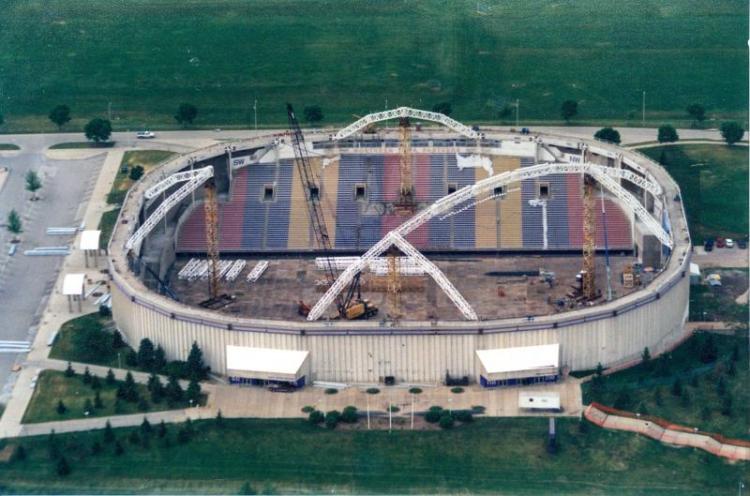
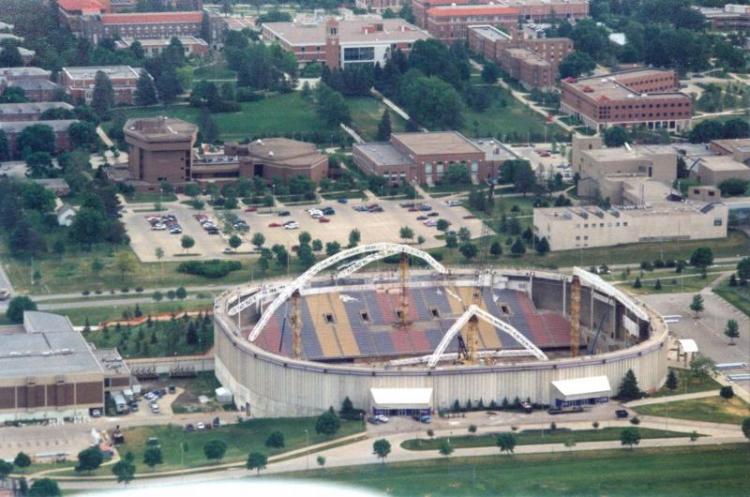
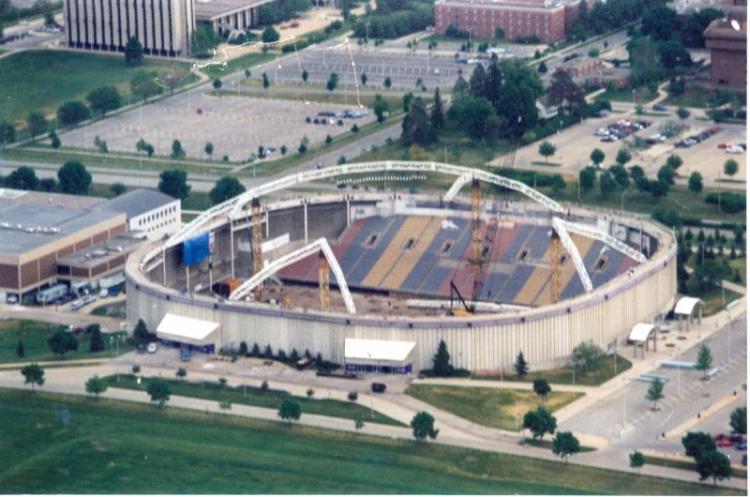
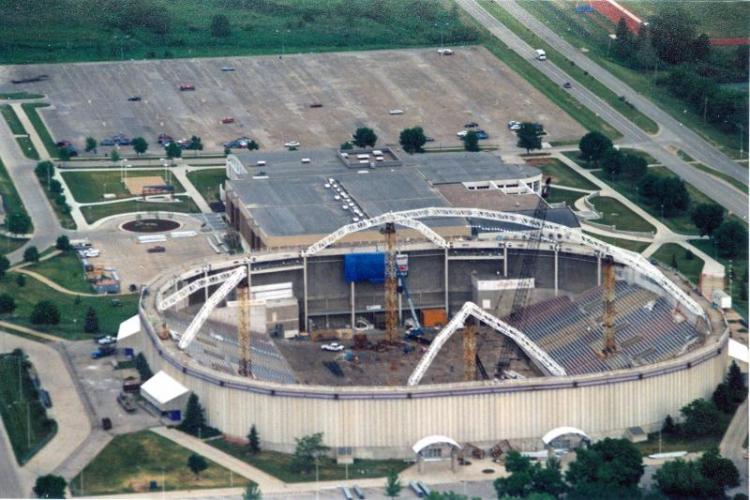
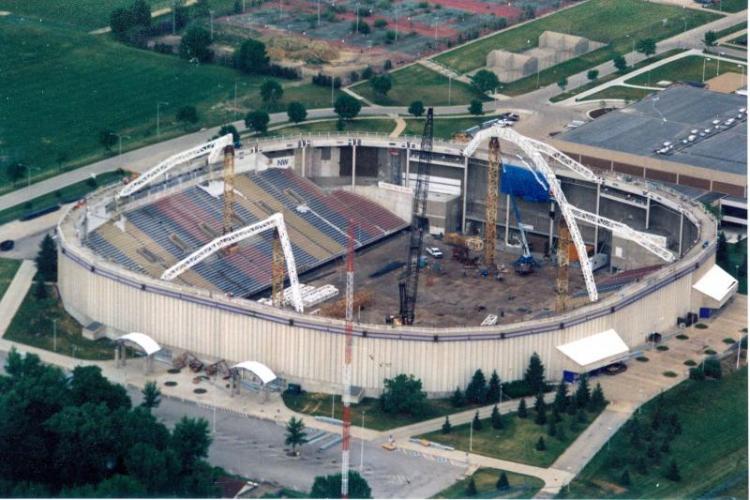
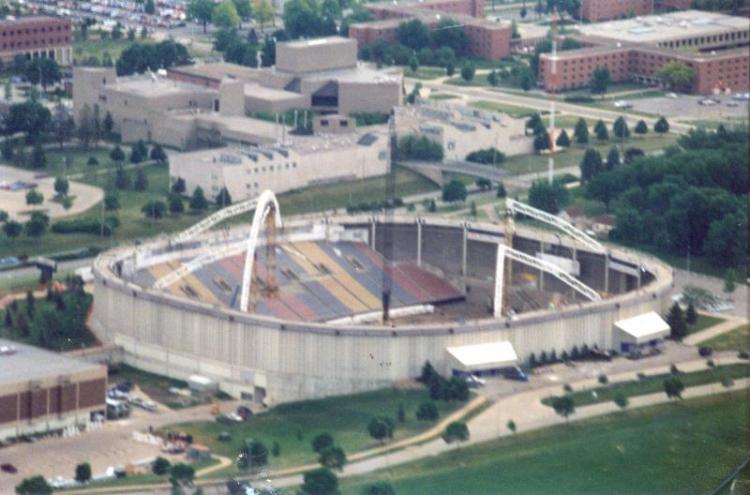
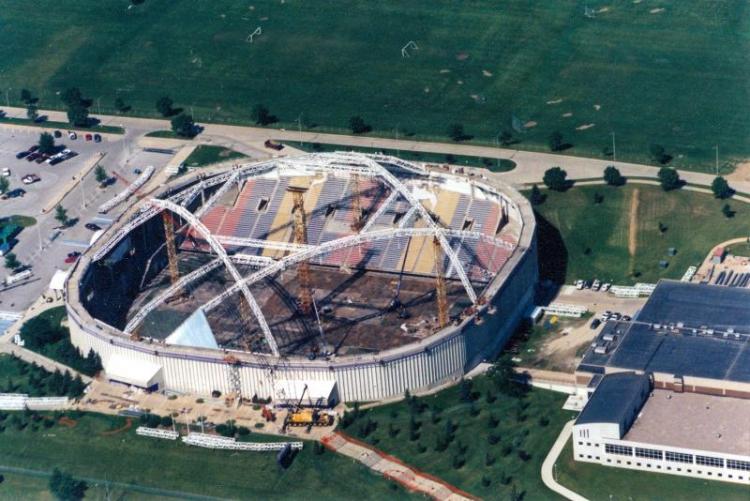
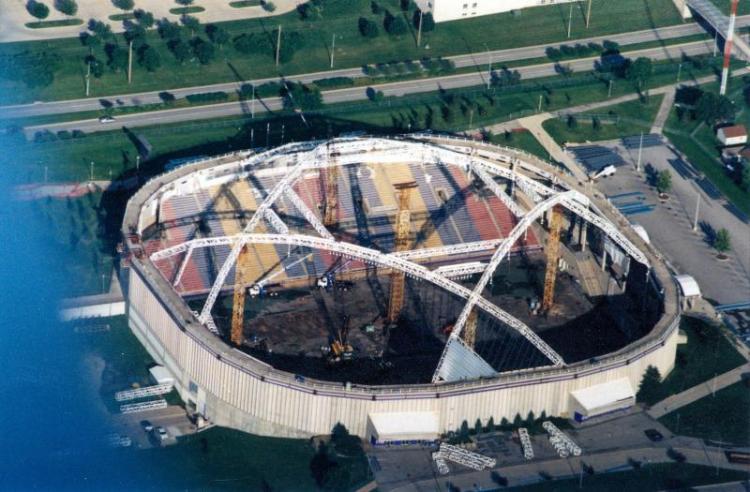
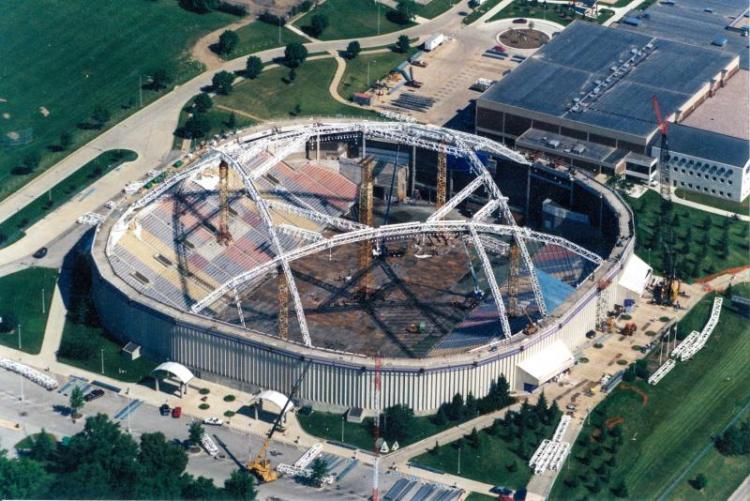
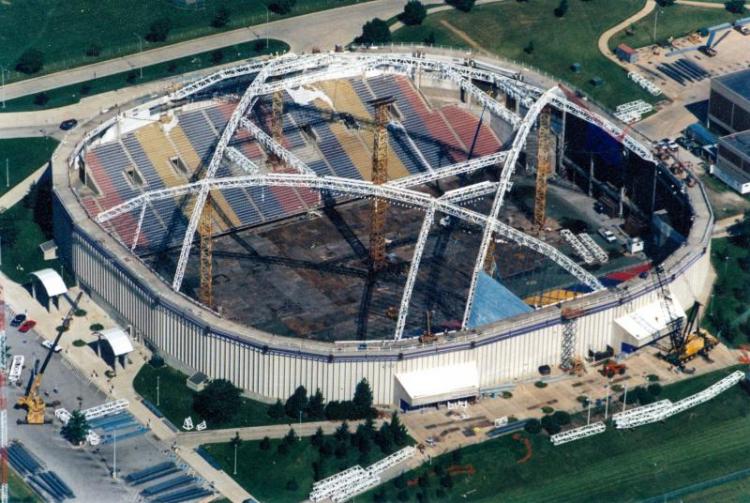
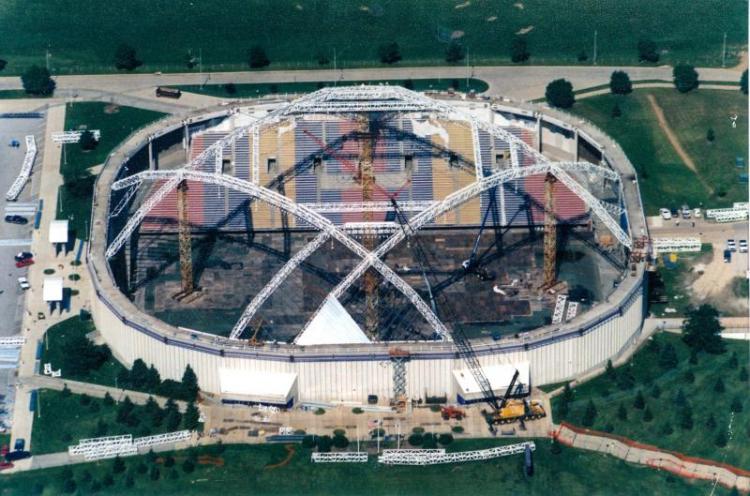
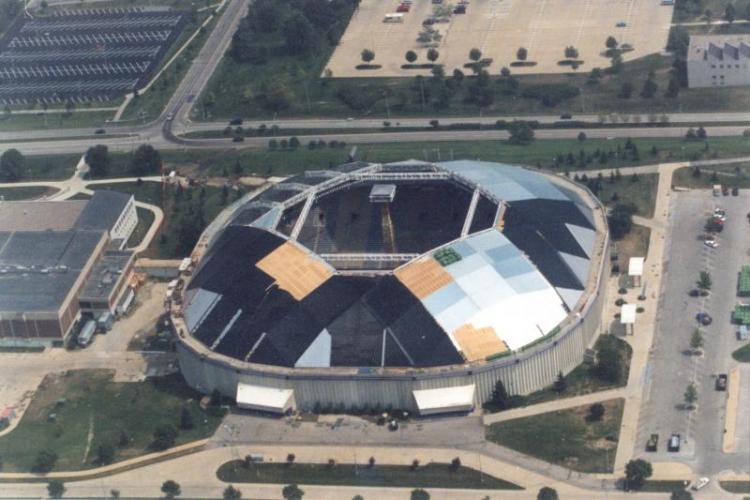
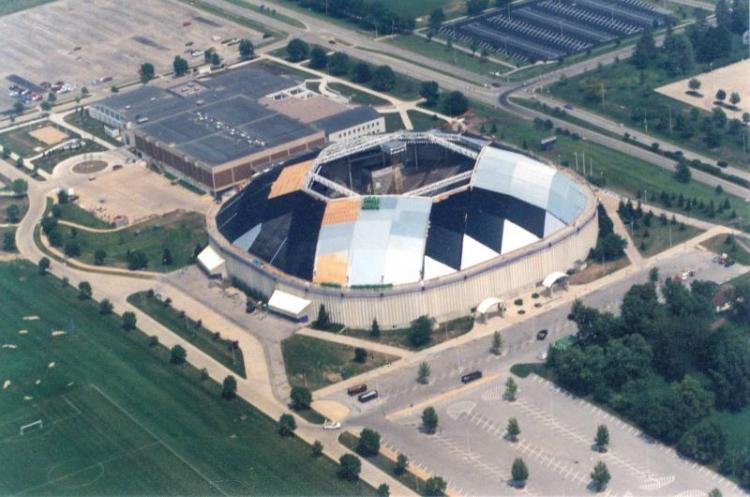
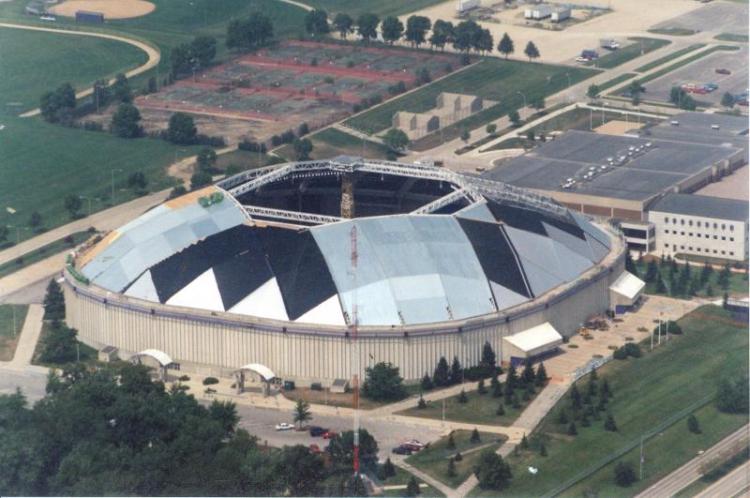
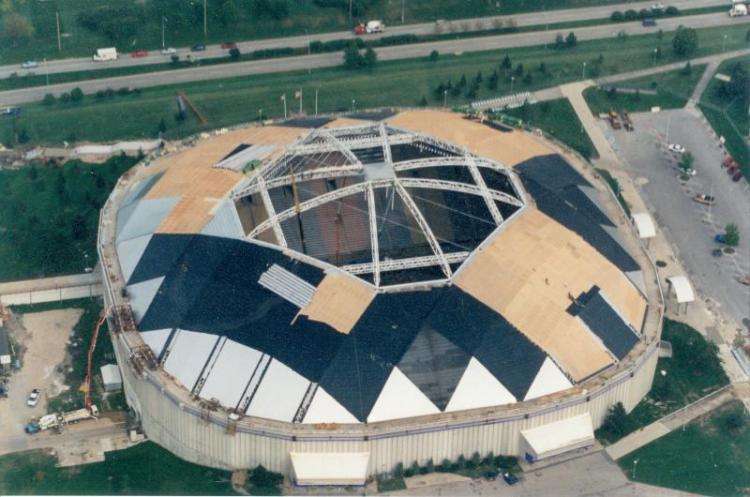
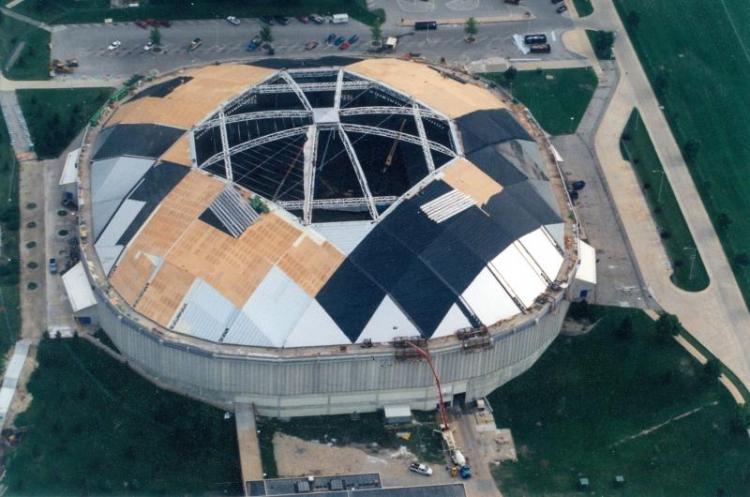
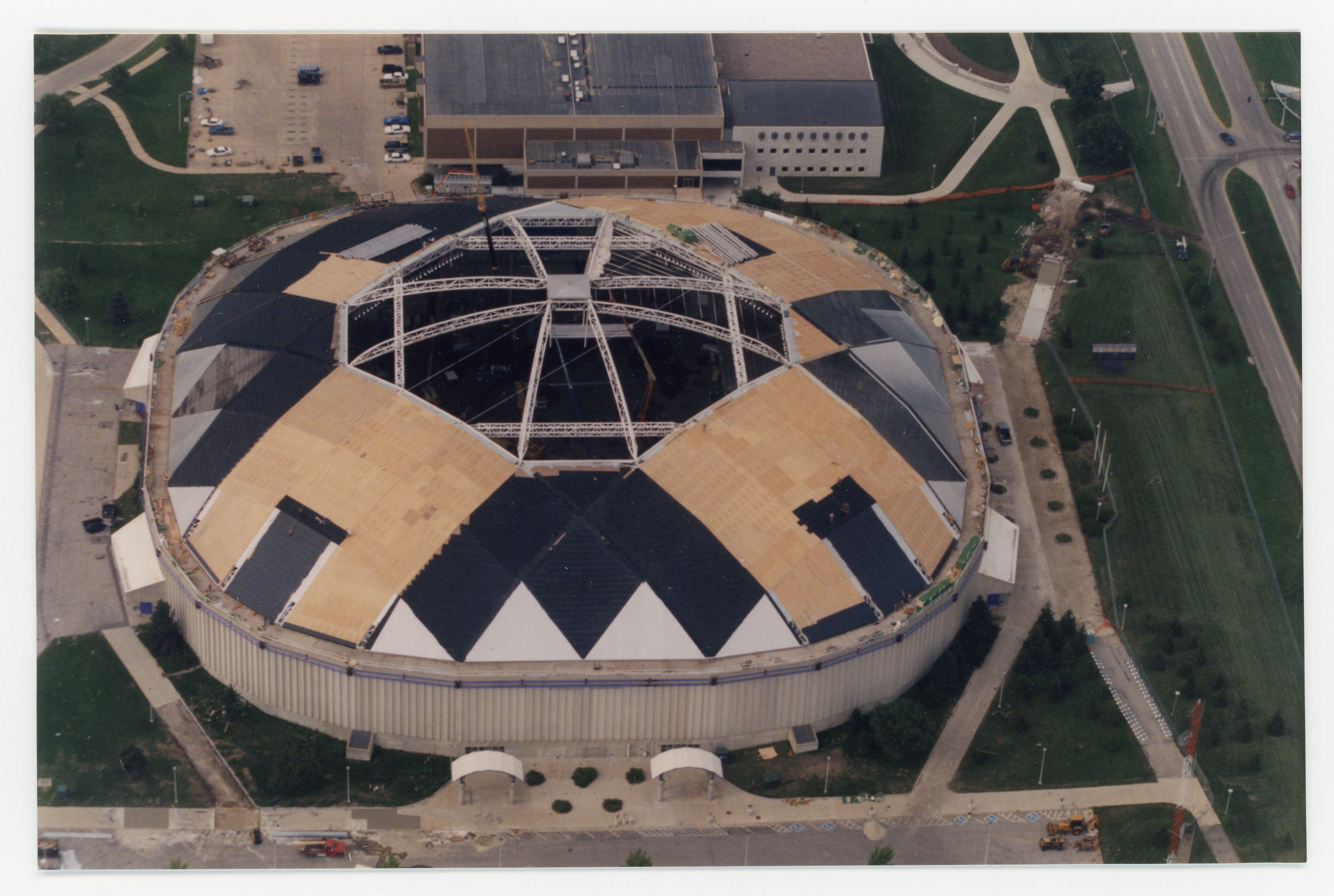
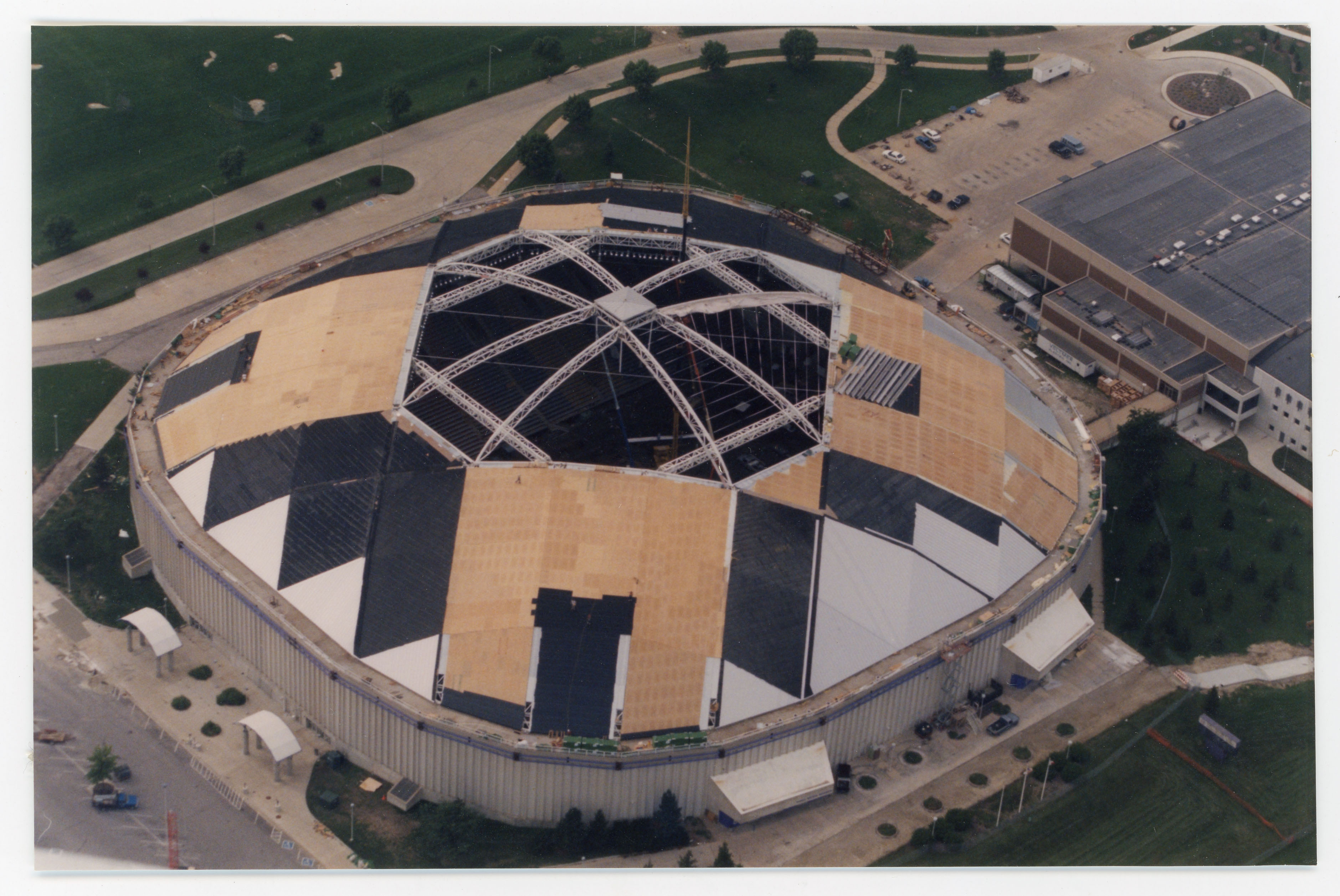
Box 35 Folder 5, #23, University Archives, Rod Library, University of Northern Iowa.
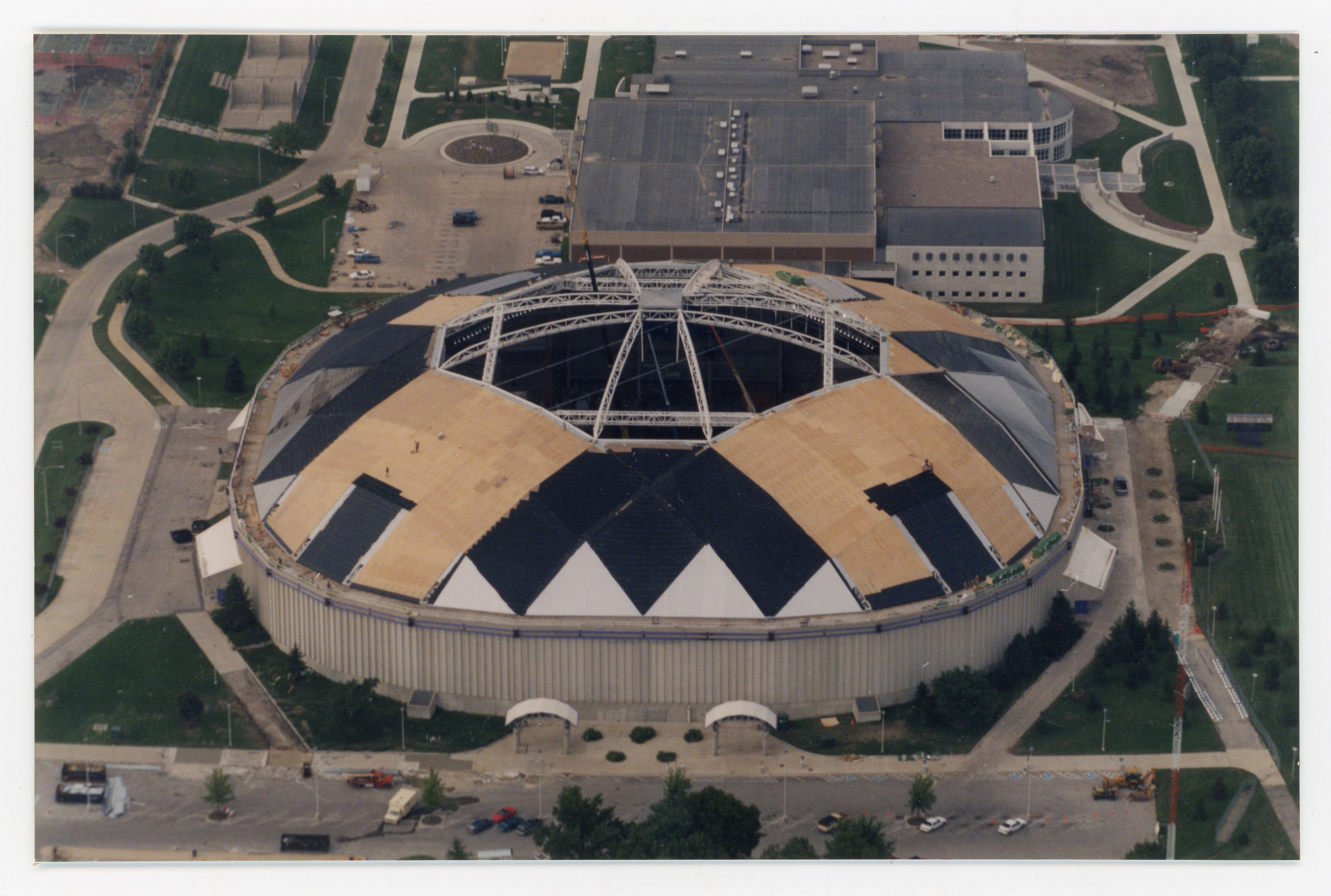
Box 35 Folder 5, #23, University Archives, Rod Library, University of Northern Iowa.
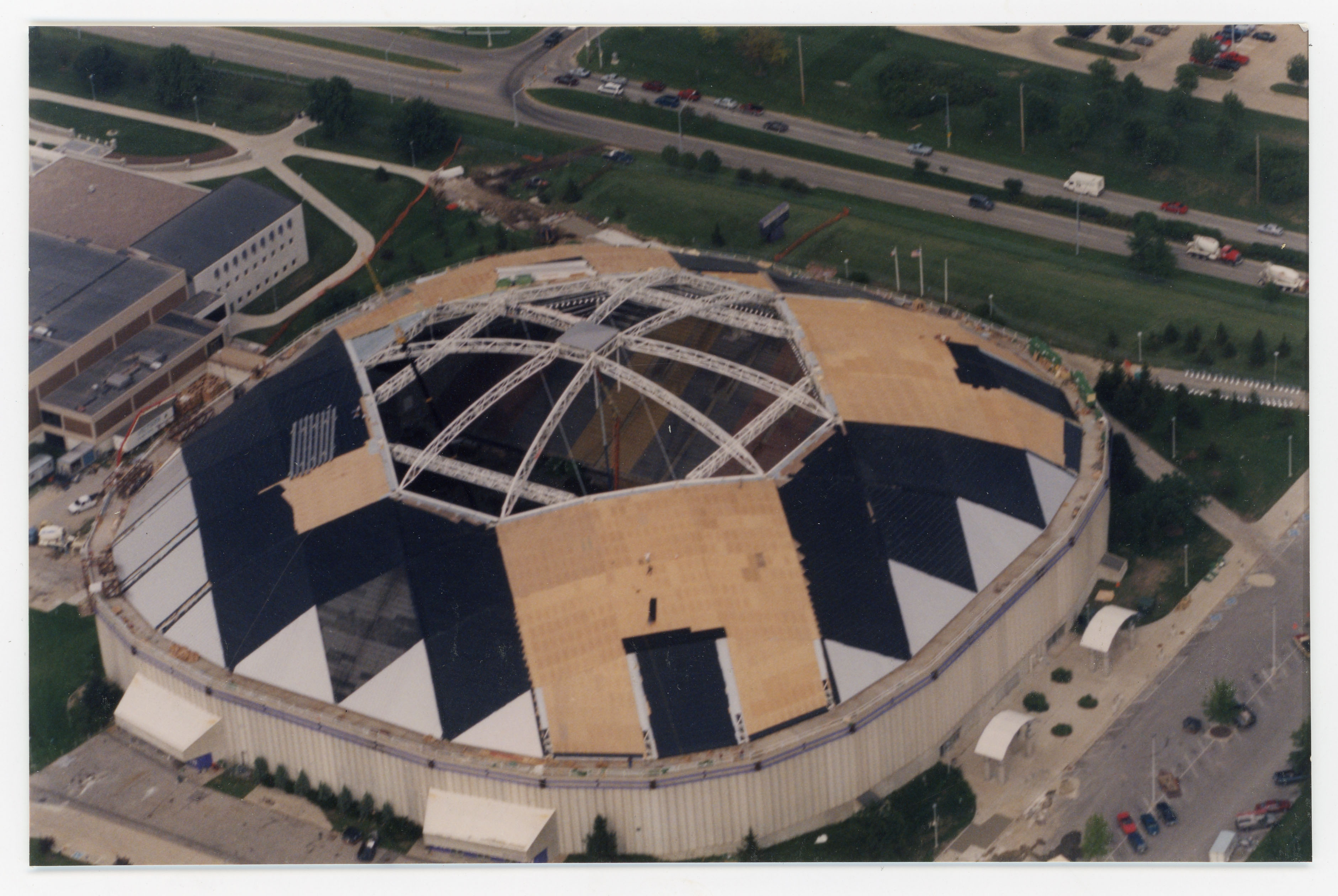
Box 35 Folder 5, #23, University Archives, Rod Library, University of Northern Iowa.
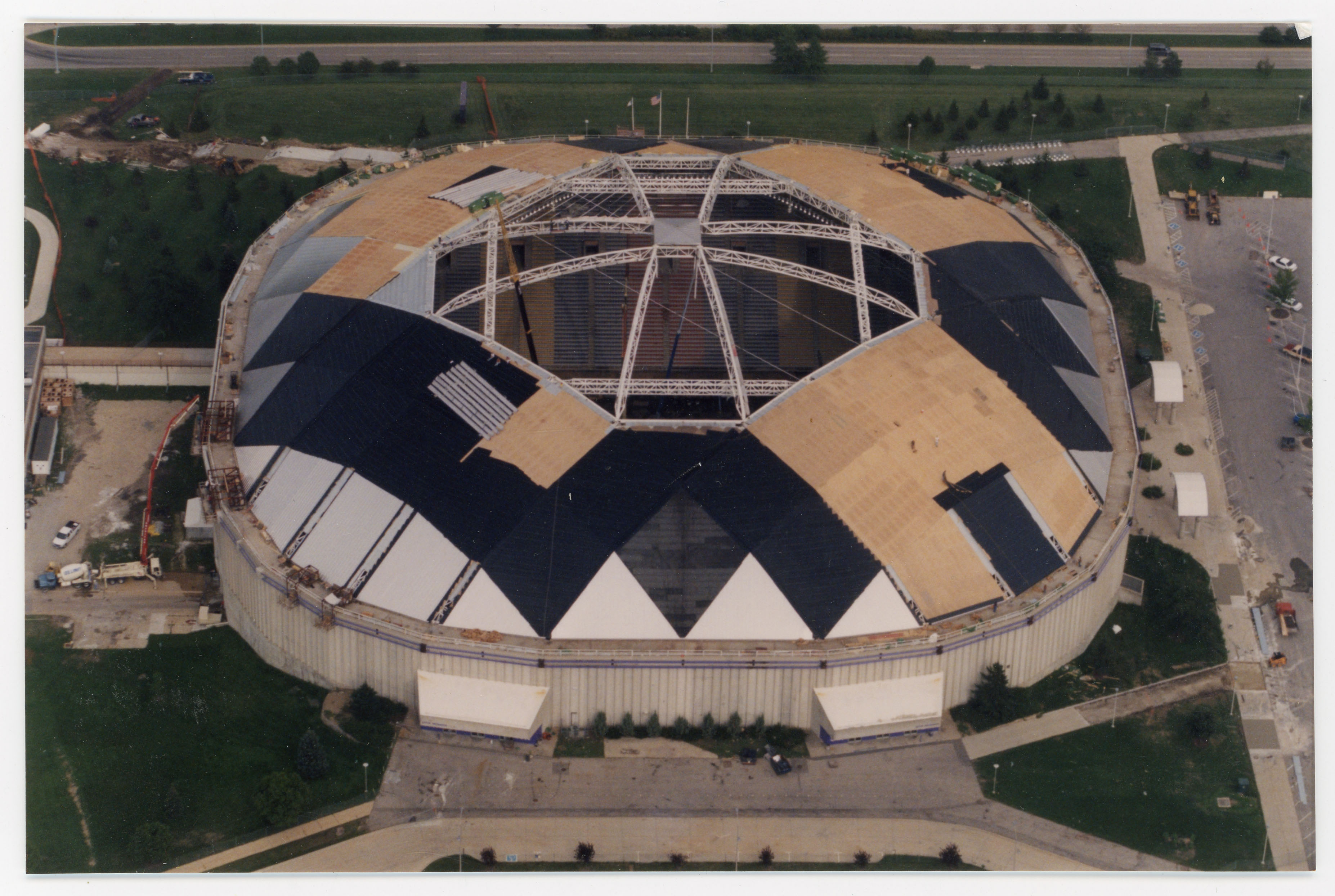
Box 35 Folder 5, #23, University Archives, Rod Library, University of Northern Iowa.
Page created by University Archivist Gerald L. Peterson, with scanning by Library Assistant Joy Lynn, September 24, 2014; last updated, September 24, 2014 (GP); photos updated and citations added by Graduate Assistant Eileen Gavin, May 9, 2025.
